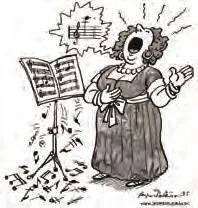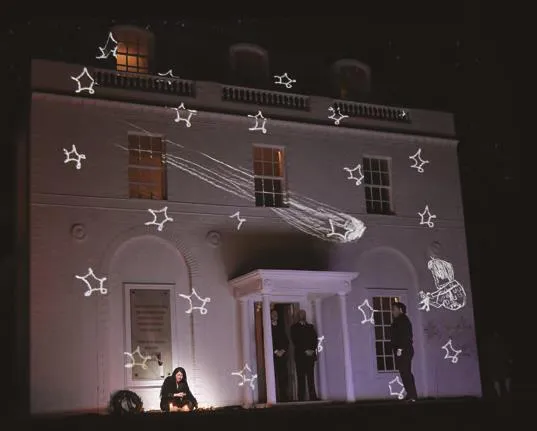从门外汉到歌剧通
主持:Joanna C. Lee 编译:辛时雨

台上转圈圈
Round and round we go


小琼:我又一次被舞台技术打动了,这次倒是因为一种颇为旧式的东西:旋转舞台。这种简易的设备(几个世纪前所发明的)在21世纪依然能给人启发。
小薇:旋转舞台可能算是最古老的舞台机械之一了。我在查询其相关资料时得知,已知最早的可以完全旋转的舞台建于1617年,用于在卢浮宫举办精美的音乐及舞蹈盛会。发明者是托马索·弗拉齐尼,一位来自佛罗伦萨的水利工程师。
小琼:你知道弗拉齐尼本来是因何出名的吗?园林设计,还有华丽的喷泉!到了19世纪末,旋转舞台才开始由电力驱动。首个电动的旋转舞台在维也纳的王宫剧院建成,用于制作莫扎特的歌剧《唐乔瓦尼》。
小薇:很高兴知道歌剧总是处于舞台艺术的最前沿!
小琼:启发我的是上个月在巴塞罗那利索大剧院上演的一场亨德尔的《罗德琳达》,由克劳斯·古特执导。如上图所示,这部巴洛克歌剧完全被重新设定在了现代背景下,所有的情节都发生在一所豪宅内,将王公贵族的故事移植为一场家庭式的戏剧。
Joan:I've been very impressed by stage technology again, but this time it's actually something quite old-fashioned: the turntable. A simple device(invented centuries ago) still remains inspiring even in the 21stcentury.
Valery:The turntable is probably one of the oldest stage mechanisms. I was reading about it and found out the earliest-known fully revolving set was constructed in 1617 for an elaborate music and dance pageant at the Louvre. The inventor was Tommaso Francini, a hydraulics engineer from Florence.
Joan:Did you know what Francini was originally famous for? Garden designs with fancy water fountains!By the late 19thcentury, revolving stages were powered by electricity. The first one was built in Vienna's Residenz Theatre for a production of Mozart'sDon Giovanni.
Valery:Good to know that opera was always at the forefront of stagecraft!
Joan:What I saw that inspired me was a performance of Handel'sRodelindadirected by Claus Guth last month at Barcelona's Gran Teatre di Liceu. As you can see in the photos, this Baroque opera is completely reset to modern time, all of the action taking place in a mansion, turning a story of kings and ministers into a domestic drama.

巴塞罗那利索大剧院上演的《罗德琳达》剧照
小薇:有趣的是,演出使用的转台,台面上是圆形的,装置本身却是方形的。我们有时看到的是主入口的正面,有时是上下楼层的房间,甚至是一个大楼梯。看上去有充足的空间供演员们四处走动。
小琼:关键是还具有连续性!即便需要增添或减少道具,舞台人员可以在“幕后”进行操作,让转场的过程更加平滑,不会浪费任何时间。
小薇:我注意到,整个房子都被漆成了白色,这样投影设计师就可以创新地“创造”空间或增加图像来改变舞台上的气氛。有张照片上的投影密集得好似歌手站在森林中,而另一张则绘着夜空星辰。
小琼:差点就忘了表扬一下本次制作中声乐及器乐的精湛演出。这部《罗德琳达》是视听结合创造歌剧魔力的绝佳典范。
Valery:It's really interesting knowing that the turntable on stage is round, but the sets themselves are square. Sometimes we see the façade of the main entrance, at other times rooms on both levels, or even a grand staircase. There seems to be ample space for the actors to move around.
Joan:Continuity is the key! And even if props had to be added or subtracted, stagehands could handle them “behind the scenes,” thus rendering very smooth transitions without wasting any time.
Valery:I notice the entire house is painted white,so that the projection designer can be innovative in“creating” spaces or adding images to change the mood on stage. One photo shows such dense projection as if the singer is standing in the middle of a forest, while another includes drawings of nighttime stars.
Joan:I'd be remiss if I didn't also praise the production for superb singing and orchestral playing.ThisRodelindais a great example of how the perfect combination of what we see and hear makes the operatic experience pure magic.

